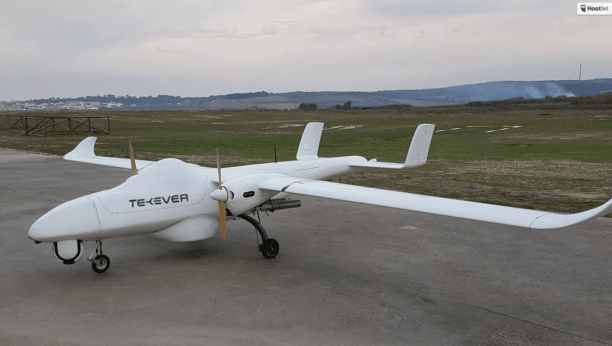(News and commentary.) Europe stands at a critical juncture in defense technology development, with two massive initiatives promising to reshape the continent’s military capabilities. The €800 billion Readiness 2030 plan and the €7.953 billion European Defence Fund (EDF) represent unprecedented investments in European defense autonomy. But will these programs successfully catalyze growth in Europe’s nascent drone industry, or will established market dynamics prove too entrenched to overcome?


The Strategic Imperative: Breaking Chinese Market Dominance
The European drone market presents a compelling growth story, projected to expand by some estimates from €4.56 billion in 2024 to €45.96 billion by 2034—a remarkable 26% compound annual growth rate. However, this optimistic trajectory faces a fundamental challenge: Chinese manufacturers, led by DJI, control approximately 70% of the global commercial drone market and nearly 90% of critical drone components.
This dominance creates what industry experts describe as a “chicken-and-egg problem” for non-Chinese manufacturers. American drone companies typically produce thousands of units annually while DJI ships millions, creating insurmountable disparities in production efficiency and component costs. European manufacturers face identical scaling challenges, making the question of whether Readiness 2030 and EDF can break this cycle particularly urgent.
The Investment Framework: Targeted Support for Drone Technologies
Both initiatives demonstrate clear commitment to drone technology development. The EDF has allocated €45 million specifically for disruptive technologies and innovations in 2024, including autonomous drone systems and counter-drone capabilities. Recent funding rounds have supported critical projects like Eurosweep (unmanned minesweeping systems) and iMUGS2 (unmanned ground vehicle testing).
Readiness 2030’s structure appears particularly well-suited to address manufacturing scale challenges. The Security Action for Europe (SAFE) instrument offers €150 billion in low-interest loans for joint defense projects, specifically including drones and counter-drone technologies. Crucially, SAFE mandates that at least 65% of equipment costs must originate from EU, European Economic Area, EFTA countries, or Ukraine—directly addressing supply chain vulnerabilities while creating guaranteed demand for European manufacturers.
Market Response: Early Signs of Success
The most compelling evidence for potential success comes from market participants’ strategic responses. Australian counter-drone firm DroneShield has announced European facility establishment specifically to meet increased defense demand, investing in manufacturing capabilities with at least 65% European content. This represents exactly the type of industrial response these policies aim to generate.
European companies are already demonstrating competitive potential. German company Quantum Systems achieved unicorn status with €160 million in Series C funding, while Portuguese firm Tekever secured £400 million for its OVERMATCH program. These developments suggest that with adequate demand guarantees, European drone manufacturers can attract necessary capital and scale operations effectively.
The Critical Success Factors
Sustained Demand Creation: The fundamental barrier for non-Chinese manufacturers has been insufficient scale to achieve competitive manufacturing costs. Readiness 2030’s four-year, €800 billion commitment could provide the sustained procurement volume necessary to justify major capital investments in European production facilities.
Supply Chain Resilience: Current dependence on Chinese components for flight controllers, motors, propellers, and batteries creates significant vulnerabilities. The European content requirements embedded in both initiatives force development of alternative supply chains, though this transition will require substantial time and investment.
Technological Differentiation: The EDF’s focus on collaborative defense research, with €2.7 billion allocated for R&D, enables European companies to develop specialized capabilities that differentiate them from commercial Chinese alternatives. Military-specific requirements for security, interoperability, and performance create market segments where European manufacturers can compete on value rather than pure cost.
Potential Limitations and Risks
Despite promising fundamentals, several factors could limit success. The defense industry’s historical “build-to-order” approach has resulted in insufficient manufacturing capacity and long wait times. Transforming this into scaled production requires sustained political commitment beyond initial announcements.
Additionally, while €800 billion represents substantial investment, global drone market dynamics favor established players with existing economies of scale. Success depends not just on funding availability, but on European manufacturers’ ability to translate investment into competitive technological and manufacturing capabilities.
Cautious Optimism Warranted
The combination of Readiness 2030 and EDF funding creates unprecedented conditions for European drone industry growth. The initiatives address the core challenge—manufacturing scale—through sustained demand creation while building technological differentiation through collaborative R&D investment.
Early market responses, including DroneShield’s European expansion and successful European startup funding rounds, suggest these policies are already influencing strategic decision-making. However, ultimate success will depend on sustained implementation, continued political commitment, and European industry’s ability to execute on the opportunities these investments create.
The question is not whether these initiatives will support some growth in European drone capabilities—they clearly will. The more pertinent question is whether they will generate sufficient scale and momentum to establish Europe as a genuinely competitive alternative to Chinese dominance in this critical technology sector.
Read more:


